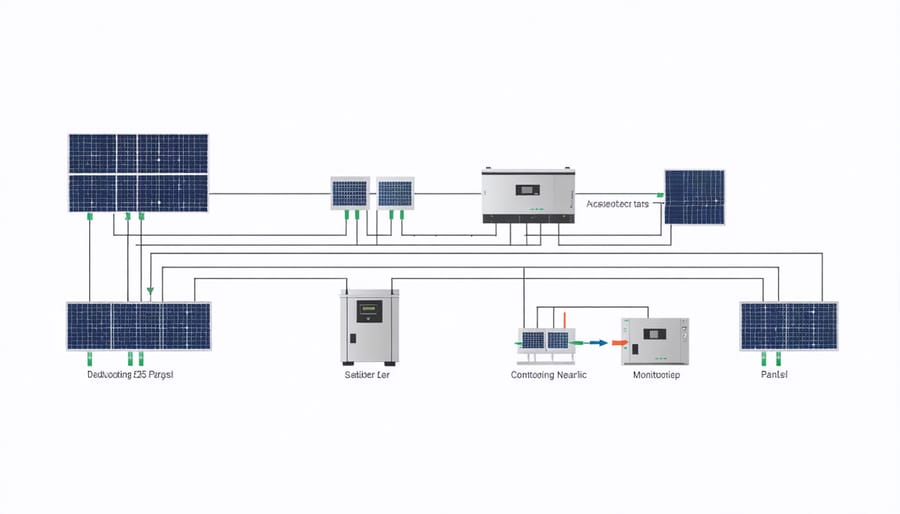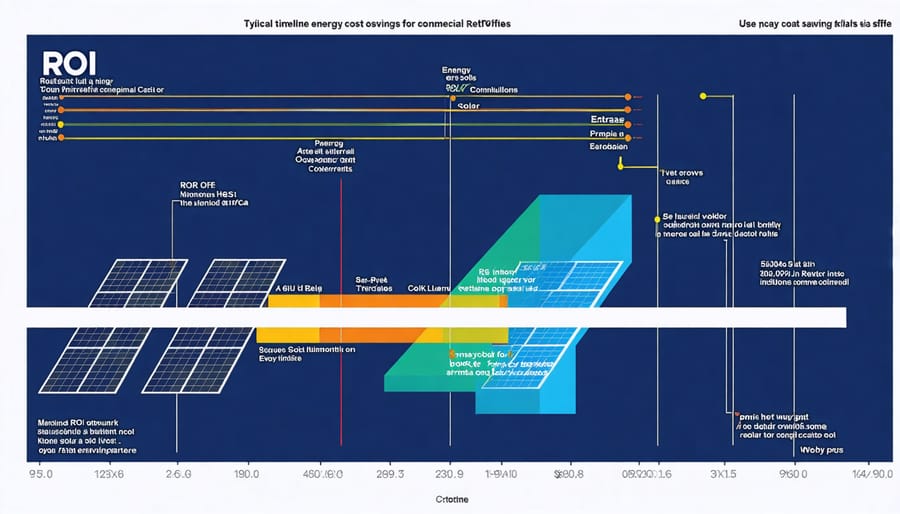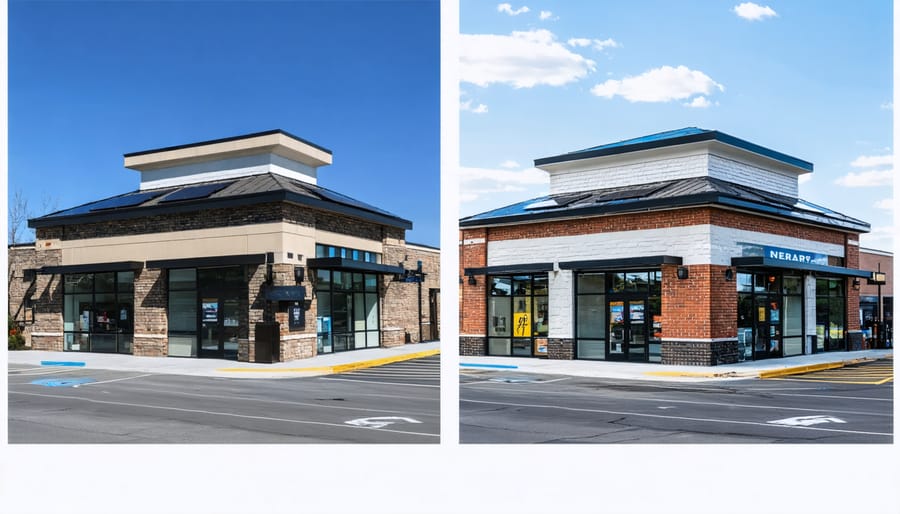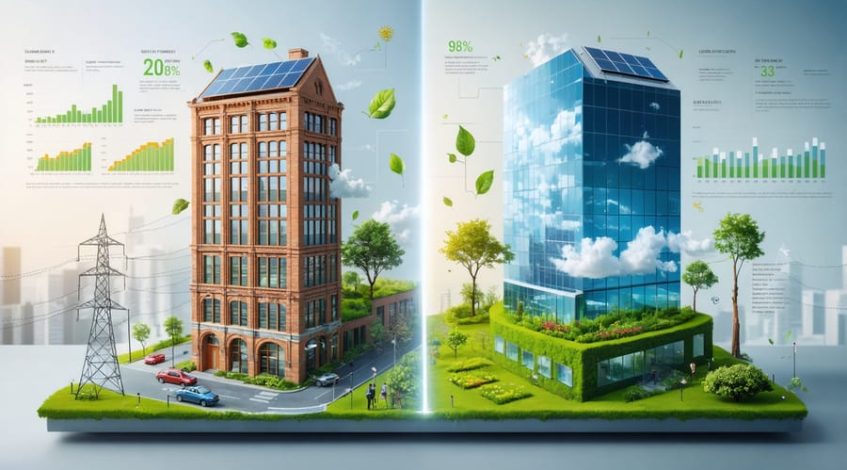Transform aging commercial buildings into energy-saving powerhouses through strategic energy-efficient retrofits that deliver substantial ROI while advancing sustainability goals. Modern retrofit solutions combine advanced building automation, smart HVAC upgrades, and integrated renewable energy systems to reduce operational costs by 30-50% annually. As global energy prices continue rising and environmental regulations tighten, facility managers and business owners who implement comprehensive retrofit strategies position themselves at the forefront of sustainable business practices while securing long-term cost advantages. Leading organizations across industries have demonstrated that well-planned energy retrofits typically pay for themselves within 3-5 years through reduced utility bills, improved asset value, and available tax incentives. This practical guide examines proven retrofit approaches, financing options, and implementation strategies to help decision-makers navigate the transition to high-performance building operations.
Understanding Solar Energy Retrofits for Commercial Buildings
Key Components of Solar Retrofit Solutions
Modern solar infrastructure solutions comprise several essential components that work together to maximize energy efficiency in retrofitted buildings. At the core is the solar PV array, consisting of high-efficiency photovoltaic panels strategically positioned to capture maximum sunlight. These panels are connected to sophisticated inverter systems that convert DC power to AC power, making it usable for building operations.
Smart monitoring systems form another crucial component, providing real-time data on energy production, consumption patterns, and system performance. These systems enable facility managers to optimize energy usage and quickly identify maintenance needs. The integration framework includes mounting hardware, wiring infrastructure, and safety equipment, all designed to work seamlessly with existing building systems.
Battery storage solutions are increasingly becoming standard in retrofit projects, allowing facilities to store excess energy for use during peak demand periods or nighttime operations. Advanced system controllers manage the flow of power between solar panels, storage systems, and the building’s electrical grid, ensuring optimal energy distribution and maximizing cost savings.

Building Assessment and Retrofit Planning
A successful energy efficient retrofit begins with a comprehensive building assessment that evaluates current energy consumption patterns, structural integrity, and system performance. This process typically involves conducting an energy audit, analyzing utility bills, and inspecting existing mechanical systems, insulation, and building envelope components.
The assessment phase should identify key areas of energy loss, inefficient equipment, and potential opportunities for improvement. Professional energy auditors use specialized tools such as thermal imaging cameras, blower door tests, and energy modeling software to gather detailed data about building performance.
Based on the assessment findings, facility managers can develop a strategic retrofit plan that prioritizes improvements based on potential energy savings, implementation costs, and return on investment. This plan should consider factors such as building occupancy patterns, local climate conditions, and available incentive programs.
The retrofit planning process should establish clear project objectives, timeline, and budget constraints while accounting for potential disruptions to building operations. It’s essential to sequence improvements logically, often starting with low-cost measures like lighting upgrades before moving to more complex interventions such as HVAC system replacements or building envelope improvements.
Financial Benefits and ROI Analysis

Energy Cost Reduction Potential
Energy efficient retrofits offer substantial cost reduction potential through various energy cost reduction strategies. Studies show that comprehensive retrofits can reduce energy consumption by 20-50%, with some buildings achieving even higher savings. The most significant reductions typically come from HVAC system upgrades, which can lower energy costs by 15-30%, while lighting retrofits often yield 10-20% savings.
Building envelope improvements, including insulation and window upgrades, generally deliver 10-25% energy savings. Smart building technologies and automated energy management systems can contribute an additional 10-15% reduction in energy costs. When combined with renewable energy solutions like solar panels, facilities can achieve total energy cost reductions of up to 70%.
The financial impact is substantial: a typical commercial building of 50,000 square feet can save $40,000 to $100,000 annually through comprehensive retrofits. ROI periods usually range from 2-7 years, depending on the measures implemented and local energy costs. Government incentives and rebates can further accelerate these returns.
Real-world examples demonstrate these savings: A recent retrofit of a 10-story office building in Melbourne achieved a 45% reduction in energy costs within the first year, while a manufacturing facility in Sydney cut its energy expenses by 60% through a combination of LED lighting, HVAC optimization, and solar installation.
Available Incentives and Tax Benefits
Several federal, state, and local incentives make energy efficient retrofits more financially attractive for businesses. The federal Investment Tax Credit (ITC) allows organizations to deduct up to 30% of solar installation costs from their federal taxes. This credit applies to both equipment and installation expenses, significantly reducing the initial investment.
Many states offer additional tax incentives and rebates. These can include sales tax exemptions on solar equipment, property tax exclusions for the added value of solar installations, and performance-based incentives that pay for each kilowatt-hour of energy produced. Some utilities also provide custom rebates and grants for commercial energy efficiency upgrades.
The Modified Accelerated Cost Recovery System (MACRS) enables businesses to depreciate solar assets over five years, improving cash flow and return on investment. Commercial Property Assessed Clean Energy (C-PACE) financing allows building owners to fund retrofits through property tax assessments, offering long-term, fixed-rate financing.
Local governments frequently provide additional incentives such as expedited permitting, reduced fees, and technical assistance programs. Businesses can also benefit from demand response programs, which offer payments for reducing energy consumption during peak periods.
Organizations should consult energy efficiency professionals and tax advisors to maximize available incentives, as programs and eligibility requirements vary by location and can change annually. Many incentives can be combined to create comprehensive funding packages that significantly reduce project costs.
Implementation Best Practices
Project Timeline and Planning
A successful energy efficient retrofit project requires careful planning and systematic execution. Begin with a comprehensive energy audit to establish baseline performance and identify improvement opportunities. This initial assessment typically takes 2-4 weeks, depending on facility size and complexity.
Following the audit, develop a detailed implementation strategy incorporating smart solar retrofitting and other energy-saving measures. Allow 4-6 weeks for planning, including contractor selection and permit applications.
The implementation phase usually follows this sequence:
1. Building envelope improvements (4-8 weeks)
2. HVAC system upgrades (6-12 weeks)
3. Lighting system modernization (3-6 weeks)
4. Solar installation and integration (2-4 weeks)
5. Smart controls implementation (2-3 weeks)
Schedule regular progress meetings throughout the project to ensure adherence to timelines and address any challenges promptly. Factor in equipment lead times and potential weather delays when developing your timeline. Most comprehensive retrofit projects take 6-12 months from initial assessment to completion.
Post-implementation monitoring and verification should continue for at least 12 months to ensure optimal system performance and validate energy savings. Include staff training sessions during the final phase to ensure proper system operation and maintenance.
Minimizing Business Disruption
Implementing energy-efficient retrofits while maintaining regular business operations requires careful planning and strategic execution. The key to minimizing disruption lies in developing a phased implementation approach that coordinates installation activities around peak business hours.
Start by conducting a thorough assessment of your facility’s operational patterns to identify optimal installation windows. Many retrofit projects can be scheduled during off-peak hours, weekends, or planned maintenance periods. For larger organizations, consider a floor-by-floor or zone-by-zone implementation strategy to keep disruptions localized and manageable.
Communication is crucial throughout the process. Establish clear protocols for notifying employees, customers, and stakeholders about scheduled work periods. Create contingency plans for critical operations and ensure backup systems are in place during switchovers. Working closely with experienced contractors who understand the importance of business continuity can significantly reduce downtime.
Consider temporary modifications to workspace arrangements, such as creating flexible work areas or implementing remote work options during installation periods. Some organizations successfully utilize mobile office solutions or temporary facilities for particularly intensive phases of the retrofit.
Many modern retrofit solutions are designed for rapid installation with minimal interference. For example, LED lighting upgrades can often be completed outside of business hours, while HVAC improvements can be scheduled during shoulder seasons when systems are under lower demand. By carefully orchestrating these elements, businesses can achieve their energy efficiency goals while maintaining productive operations throughout the retrofit process.
Real-World Success Stories
Retail Complex Case Study
The Ridgeview Shopping Center in Colorado demonstrates the transformative potential of energy-efficient retrofits in the retail sector. This 150,000-square-foot complex, built in 1985, underwent a comprehensive solar retrofit in 2019 that has yielded remarkable results.
The project involved installing a 420kW rooftop solar array comprising 1,050 high-efficiency panels, coupled with smart energy management systems and LED lighting upgrades throughout the facility. The installation was strategically phased to minimize disruption to the complex’s 25 retail tenants.
Initial investment totaled $875,000, offset by $262,500 in federal tax credits and local utility incentives. The retrofit has reduced the facility’s annual energy consumption by 45%, translating to $98,000 in yearly utility savings. The system is projected to pay for itself within 6.2 years while providing clean energy for over 25 years.
Beyond financial benefits, the retrofit has enhanced the property’s market value by $1.2 million and attracted environmentally conscious tenants. The complex’s occupancy rate increased from 82% to 96% within 18 months of project completion. Tenant satisfaction surveys showed a 35% improvement in comfort levels due to better temperature control and lighting quality.
The success of this project has inspired neighboring businesses to pursue similar retrofits, creating a ripple effect of sustainable practices in the local retail sector.

Office Building Transformation
The 2019 renovation of the Meridian Tower in Portland, Oregon, stands as a compelling example of successful solar retrofitting in commercial real estate. This 12-story office building, constructed in 1985, underwent a comprehensive energy efficiency transformation that reduced its energy consumption by 47% and significantly lowered operational costs.
The retrofit project included the installation of a 175kW rooftop solar array comprising 435 high-efficiency panels, coupled with smart energy management systems. The building’s existing HVAC infrastructure was integrated with solar thermal technology for heating and cooling, while LED lighting upgrades with motion sensors optimized electricity usage throughout the facility.
Initial investment costs totaled $2.8 million, with $850,000 allocated specifically to solar integration. The project secured $400,000 in federal tax incentives and state rebates, reducing the overall financial burden. Within three years, the building achieved an annual energy cost reduction of $195,000, putting it on track for complete ROI within eight years.
Beyond financial benefits, the retrofit enhanced tenant satisfaction and increased occupancy rates from 78% to 94%. The building earned LEED Gold certification and became a showcase for sustainable commercial architecture in the Pacific Northwest. The project’s success demonstrated that older office buildings can be transformed into energy-efficient spaces while maintaining architectural integrity and improving property value.
Energy efficient retrofits represent a pivotal strategy in the transition toward sustainable building operations and reduced environmental impact. The compelling benefits of these upgrades extend far beyond immediate energy savings, creating lasting value for businesses, communities, and the environment. By implementing comprehensive retrofit solutions, organizations can expect to see significant reductions in operational costs, enhanced building performance, and improved occupant comfort.
The evidence is clear: businesses that invest in energy efficient retrofits typically experience 20-30% reductions in energy consumption, substantial improvements in property values, and strengthened competitive positioning in the market. These improvements also contribute to corporate sustainability goals and help organizations meet increasingly stringent environmental regulations.
As we move toward a more sustainable future, the importance of energy efficient retrofits cannot be overstated. The technology is proven, the financial benefits are well-documented, and the environmental impact is significant. For facility managers and business owners considering such investments, the time to act is now. Government incentives, improved financing options, and advancing technologies have created an optimal environment for implementation.
Take the first step by conducting an energy audit of your facility and consulting with qualified professionals to develop a comprehensive retrofit strategy. The path to energy efficiency is clear, and the benefits await those who choose to lead the way in sustainable building operations.

